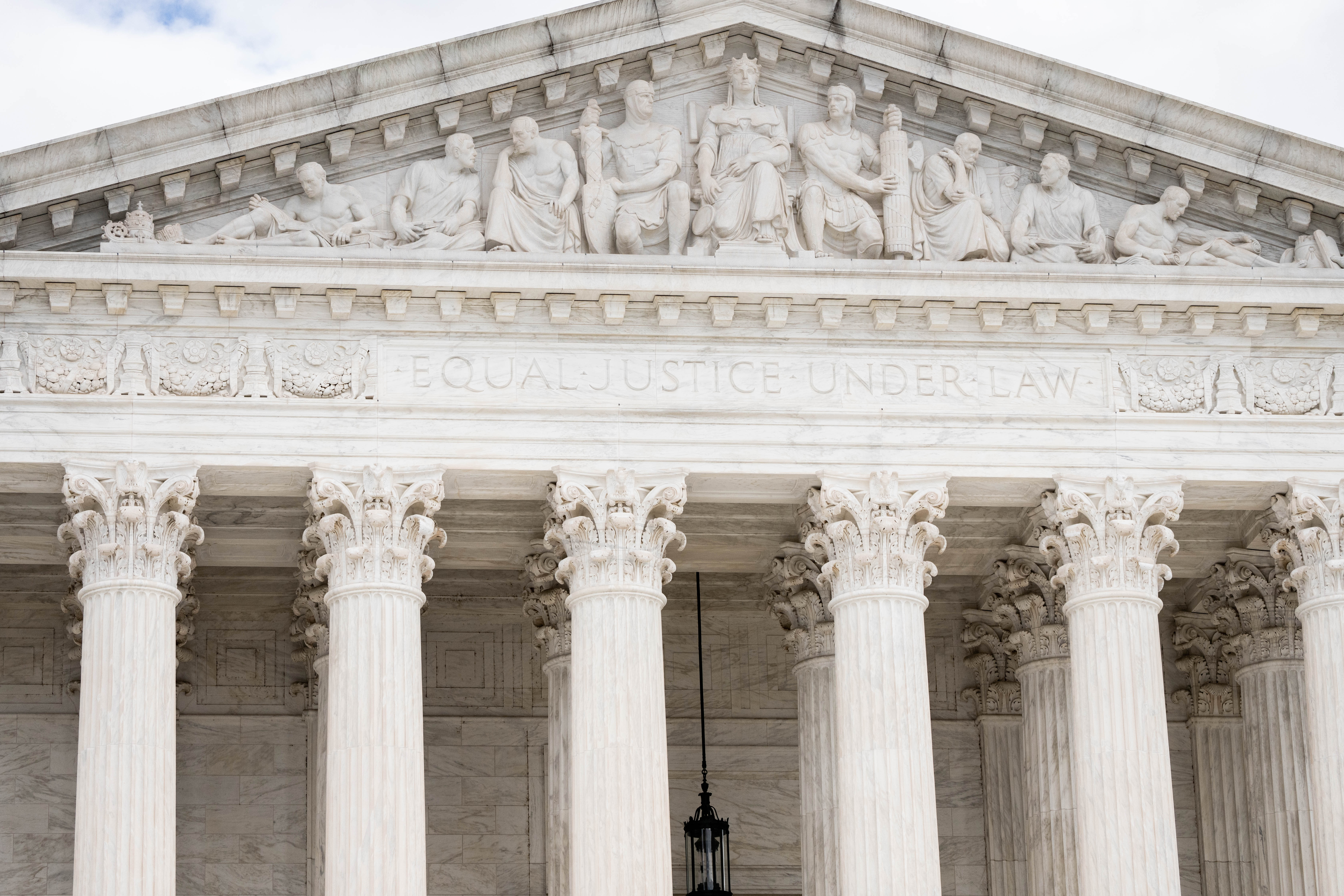It Depends Who’s Doing the Jawboning
In Murthy v. Missouri, one vital piece of context has gone unacknowledged: Different administrations operate differently.

Published by The Lawfare Institute
in Cooperation With

The Supreme Court on March 18 heard oral argument in Murthy v. Missouri, a case ostensibly about government restriction of speech. The plaintiffs have claimed that the federal government drove social media companies to throttle posts on topics spanning a bingo board of clickbait punditry: coronavirus vaccines, election denialism, and Hunter Biden’s laptop, to name a few. Lower courts agreed and issued a broad injunction prohibiting federal agencies from significantly encouraging platforms to limit content. Given the conduct the U.S. Court of Appeals for the Fifth Circuit found impermissible, the federal government asserts that the injunction—stayed for the moment, over a dissent—threatens its ability to criticize or cooperatively flag for the platforms’ consideration content implicating a wide variety of national security or public health harms. The stakes are pretty sizable, and the takes have been commensurate.
At issue here is not whether various government agencies expressed opinions about social media content the agencies thought harmful—rather, the Court’s decision will likely turn on whether the government’s advocacy with the platforms constituted coercion.
Understanding the context of the case is essential to determine the line between persuasion and coercion. But one vital piece of context has gone unacknowledged, both in the briefs and at argument. Different administrations operate differently. The Biden administration adopted a different structure from its predecessor, driven by a different philosophy of governance—including rebuilt firewalls between White House personnel and officials with enforcement authority designed to ensure that particularized enforcement decisions would be independent from both policy and politics. And, in assessing the coercive potential of the government’s pushback, those differences in executive approach should matter.
The Factual Predicate
As it comes to the Supreme Court, Murthy v. Missouri revolves around a few different federal entities forcefully advocating in different ways in 2021 and early 2022 that social media companies remove or limit the reach of social media posts or posters. The plaintiffs presented their case as abusive government conduct by an undifferentiated amalgam, claiming that 67 different federal entities and officials operated a coordinated conspiracy censoring particularly conservative voices; in an opinion released on July 4, 2023, the trial court largely accepted that framing. The Fifth Circuit did a bit better, peeling off some agencies far from the center of the fray.
Still, the presentation to the Supreme Court lumped together a lot of distinct activity spanning some 16 months. White House digital communications staff spoke privately to platforms about moderation and amplification policy, about content related to coronavirus vaccination efforts, about accounts impersonating the president’s granddaughter, about manipulated video of the first lady, and about technical problems with the president’s own social media accounts. The White House communications director and press secretary publicly discussed the president’s long-standing legislative policies on platform immunity. The surgeon general publicly criticized platform content relevant to COVID-19. The Centers for Disease Control and Prevention issued advisories, public and private, detailing what it knew about COVID-19 and its response. And the FBI privately alerted the platforms to foreign state-sponsored attempts to circulate hacked content. That’s a lot of different modes, means, and subject matter of communication to conflate.
In all of this back and forth, the platforms sometimes solicited the agencies’ perspectives, and sometimes they did not. And the companies sometimes acted consistent with those perspectives; sometimes they did not.
There are lots of tangents here serving as distractions. This case isn’t about whether the platforms have obligations to carry every message (like the phone company) or have editorial discretion like a newspaper: That’s another SCOTUS case this term. This isn’t about distinctions—largely conflated in the case—between removing content and limiting its reach or virality. This isn’t about the gentility of the government engagement, which was sometimes measured, sometimes loud (though with a pandemic claiming hundreds or thousands of lives per day, it’d have been weird for voices not to get raised), and sometimes even boorish.
This isn’t even about the third-rail subject matter of the content, or the veracity or urgency of the government’s stance. The legal basics should be the same if the Department of Flat-Earth Operations were haranguing platforms to take down content giving credence to the notion that the world is round.
Cutting out all the distractions leaves, admittedly, a hard question: How should the government engage with private speakers? I want government expertise involved in letting private actors know about the serious public health or national security consequences of their actions, even if those assessments are sometimes wrong. I don’t want private entities thinking they have to say what government officials want them to say. I don’t even want government officials yelling at private entities—particularly, but not exclusively, operations with editorial functions—that should be independent. It’s distasteful.
But under existing doctrine, unless government pressure amounts to coercion, it’s not illegal.
The Legal Standard in the Case
So what’s the difference between pressure and coercion? That’s the upshot of precedent like Bantam Books v. Sullivan, from 1963 but still setting the standard. The First Amendment limits government restrictions of speech. Usually, private entities get to decide what speech they want to publish and what speech they want to limit, without those choices being attributed to the state. If the government uses the power of the state to effectively control those decisions, though, that’s a different matter. In Bantam Books, a government-sponsored commission threatened book wholesalers with prosecution for distribution of particular titles. And, said the Bantam Books Court, that sort of coercion effectively turned the private wholesaler’s decision to stop distribution into state action.
The plaintiffs in Murthy have asked for a far broader legal standard, turning private limits into state action if the government merely encourages the restriction of speech. That argument is pulled from a different line of cases, including one in which a state legislature provided aid to allegedly discriminatory private schools, one in which a federal agency established a preemptive regulatory structure for private alcohol and drug testing, and one in which a local police officer allegedly “reached an understanding” with a local Mississippi restaurant for the restaurant to refuse service to a white teacher accompanying her Black students. In each of those cases, the Court found that the private action could be attributed to the government because of the government’s “significant encouragement”; here, plaintiffs believe that platform action should become the government’s responsibility on the basis of even less. At argument, plaintiffs’ counsel allowed that the government could lawfully flag content that was, in the government’s view, inaccurate or harmful—but suggested a First Amendment violation the moment the government offered a soft normative exhortation. A state official saying, “These posts are dangerous” would be fine: “These posts are dangerous and should be taken down” would not.
That claim didn’t find a particularly receptive ear in the context of encouraging content moderation. Most of the justices (and most of the briefs) seemed alarmed by the breadth of that standard, and far more comfortable with the line set by Bantam Books. Government officials are participants in the marketplace of ideas; they can (and, as Justices Elena Kagan, Brett Kavanaugh, and Amy Coney Barrett all noted, regularly do) advocate with vigor for others to see things their way. That includes government speech responding to private speech: Government pushback on the distribution of a message doesn’t turn a private choice into a public one. Forceful persuasion is fine. Coercion is not.
The Real Risk of Coercion
But just as the justices didn’t seem all that interested in expanding Bantam Books, neither did they seem interested in contracting it. That’s a good thing. Vigilance against the risk of coercion is important, given the variety of ways that the government may attempt to exert power.
Leave aside for a moment the plaintiffs’ protests over the administration’s calls for legislative action. It’s true: Like Trump before him, Biden has called for reform of Section 230 of the Communications Decency Act, which has immunized platforms from liability for most content they publish. But presidents don’t wield coercive power when they propose legislative policy, because presidents don’t enact legislation. (It’s part of why candidate Biden’s repeated calls for Section 230 reform and President Biden’s repeated calls for Section 230 reform have not yet produced Section 230 reform.)
Still, even without considering legislation, there are plenty of other potential government tools offering reason for concern. Government might threaten retaliatory enforcement action. It might threaten regulation, or licensing approval (that’s effectively the crux of the other case the Court heard on March 18, in which state banking regulators allegedly threatened the National Rifle Association’s banks and insurers—and, notably, in which the federal government agrees that several of the allegations amount to coercion, and should be unlawful). It might threaten to yank a private actor’s unrelated government contract, or threaten to withhold the public appointment a corporate officer is seeking. It might threaten to tank a particular company’s stock price with a public callout. (It’s not clear whether industry-wide shaming is likely to have the same market-moving effect. It’s also not clear whether the economic impact when government denigrates particular enterprises in other industries translates in any way to the social media megaliths.)
Moreover, any of those threats might be conveyed with a wink-and-a-nod just as effectively as they might be conveyed with a clear ultimatum. It’s true that you don’t need to say “or else” if your modus operandi effectively conveys the “or else.”
The Facts That Matter
Which brings us back to the facts at hand. In this case, if the platforms were really driving the bus, even with vigorous government engagement, there should be no legal problem. If the jawboning became coercive, that’s likely a First Amendment violation.
In hundreds of thousands of pages of emails produced in discovery, the plaintiffs have identified no explicit coercive threat. This case operates exclusively in the realm of the asserted implicit understanding.
But the fact that some vigorous advocacy is really “vigorous advocacy” doesn’t mean that all vigorous advocacy deserves scare quotes. The context matters.
Some executive actors have a pattern of threatening perceived bad actors with economic or regulatory harm. History provides plenty of examples from local and state government, as well as from the feds. Heck, there’s an overt instance from the previous administration: a June 2020 executive order not only protesting platforms “political bias” and “selective censorship” (fine) but also threatening specific government repercussions from enforcement agencies (not fine) and federal spending pools (not great in context, though the government has no obligation to fund problematic content either). The executive order directed the Justice Department to request Federal Communications Commission regulation determining when platform editorial policies would expose the platforms to liability, enhancing the likelihood of private litigation. It directed the Federal Trade Commission (FTC) to consider initiating enforcement reviews of platforms’ moderation policies and practices. It directed the attorney general to assemble state counterparts in a working group on state enforcement activity against platforms. And it instructed every agency to review spending on advertising on the platforms, with Justice Department review of the moderation policies of the platforms to “assess whether any online platforms are problematic vehicles for government speech.” Sometimes, it’s not particularly subtle.
Moreover, executive governance structures can magnify the impact of a threat environment. The more unitary the executive structure, the more that failure to satisfy demands to please the boss issued from one arm of government might be expected to yield consequences from another.
The plaintiffs and the trial court in Murthy both seem to have evaluated the government pressure in that light. They view the government as one undifferentiated whole—an “it,” rather than a “they”—acting as one toward one undifferentiated end. And they imagine that the Biden administration operates just like its predecessor. (To be fair, in that environment, the case for coercion looks stronger.) The appellate court, and both Justice Barrett and Chief Justice John Roberts at argument, did better in distinguishing federal entities from each other. But neither directly distinguished federal entities from each other over time.
One administration’s approach to executive power need not be a template for administrations to follow. It can also be an object lesson.
The current White House has taken notorious pains to avoid some of the governance practices of the past. That includes extensive firewalls between executive components—so much so that there’s been a whole Beltway genre of news in the past few years about excess process rigidity. There are rules and structures, and procedures to enforce those rules and structures, and—yes, Virginia, norms, which are real and still matter—designed to make sure that agencies with enforcement authority, like the Justice Department and the FTC, make those enforcement decisions with independence.
Take the simple fact that the current Justice Department is prosecuting the current president’s son. That’s a remarkable example of this administration’s commitment to preserving a separate space for enforcement decisions, and it’s far from the only one.
More broadly, consider the policy precluding current White House staff from communications with any agency about decisions involving particular entities, vigorously policed by the White House counsel to prevent even “the appearance of inappropriate influence.” That’s not a constitutionally required practice, and not a feature of every administration. (The former team’s policy was much less robust, with implementation likely influenced by tone set from the top.) The presence or absence of guardrails like that—and how robust they are in practice—ought to inform the coercive potential of government advocacy. Thus far, it’s been missing from the case.
So when Justice Kavanaugh asked at argument on March 18 if it would be coercive for the government to threaten antitrust action against a private entity for publishing particular content, the principal deputy solicitor general correctly said that would be “a huge problem.” But the Court didn’t hear about the structural firewall this administration built to ensure that Kavanaugh’s hypothetical remained strictly hypothetical.
Moreover, the change in governance structure should have affected not only how the government conveyed its advocacy but also how it was received. The platforms may have consolidated ownership structures, but they’re not mom-and-pop shops. They are extremely sophisticated corporate entities, with sophisticated government relations departments staffed by individuals intimately familiar with the executive branch, and very attuned to differences from administration to administration. When the government creates a bubble of independence for enforcement entities to operate on their own, the platforms know.
This is a species of a more general point. The “White House” is often used as synecdoche for the whole of the executive branch, but different presidents exert very different degrees of control over the expansive constellation of agencies doing executive work. And different presidents have different reactions to having their entreaties rebuffed. The objects of those entreaties understand those differences too. When an executive official—even a White House staffer—makes a request or asserts a need, the implied consequences for declining are going to vary from White House to White House and from “White House” to “White House.”
The Court has repeatedly cautioned against reflexively ascribing the intent of one legislature to another; the same should be true in the governance practices of the executive. Six of the nine justices have held federal positions in different parts of the executive branch, in administrations with very different ways of doing business. That practical experience with executive service—experience with the real ways executive officials offer information or pushback to private speakers, and the differences in the ways that different officials do so—was on welcome display in the Murthy v. Missouri arguments. The differences in their practical experiences across administrations should matter for the ultimate outcome as well.





